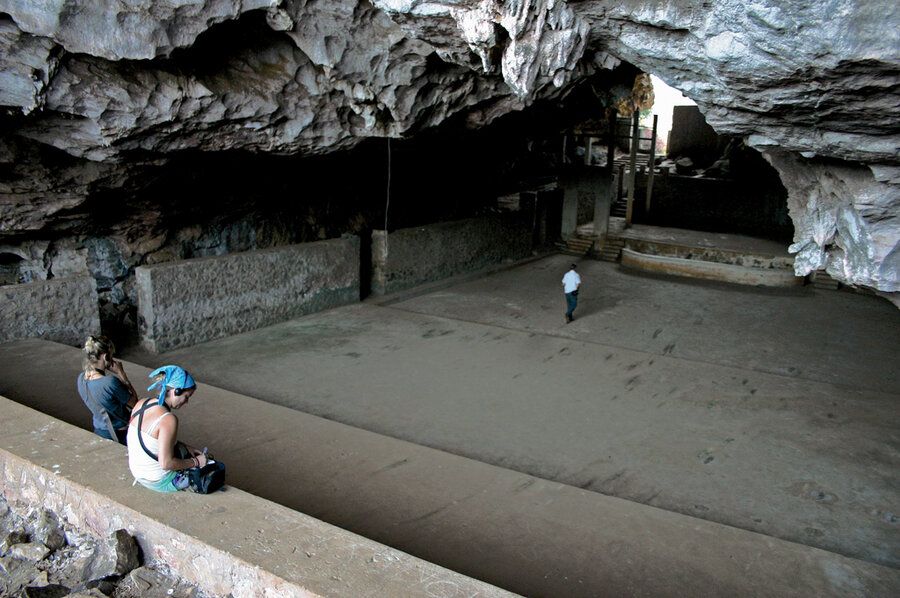Laos's secret underground city now open for tourism
Loading...
| Vieng Xai, Laos
• A local, slice-of-life story from a Monitor correspondent.
For the cradle of a violent revolution, it’s hard to imagine a more peaceful place. Residents on bicycles pedal slowly down dirt roads, past dilapidated government buildings flying the Laotian flag alongside the Soviet hammer and sickle. Jutting up from the valley floor are limestone outcrops covered in brush and riddled with caverns.
Those caves secured Vieng Xai’s place in history as the wartime capital of the country’s communist rebels. Inside, Pathet Lao leaders took shelter from nine years of relentless bombing by US aircraft, eventually emerging to take over the country in 1975. Vieng Xai means “city of victory.”
Until recently, the government, in keeping with its secretive reputation, discouraged visitors. But in November the caves were officially opened to the public. With tourism as the -country’s second-biggest source of income, authorities are keen to capitalize on Vieng Xai’s revolutionary history.
Tourists can now wander a vast network of tunnels, through meeting rooms and sleeping quarters buried deep behind walls of stone. One large cavern functioned as a natural amphitheater, complete with an orchestra pit, where the Pathet Lao would welcome visitors from friendly communist states such as Cuba, Vietnam, and the Soviet Union. On an accompanying audio device, visitors use headphones to listen to stories told by survivors and former soldiers.
“Through these caves we would like to show the world that we like peace. If we fought in the past, the reason was to defend our identity, our independence, that’s all.” said Saly Phimphinith, director general of the National Tourism Administration, in an interview. “We had the war, we got independence. We are friends with everybody [now].”
Related:





